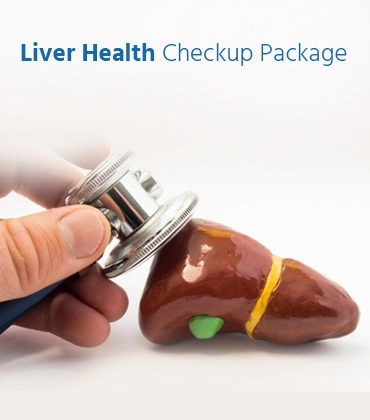Package Details
Frequently Asked Questions
1. How should one prepare for a liver function test?
Certain foods and medications may affect the results of your liver function tests. Before your blood is drawn, your doctor will probably ask you to not eat and taking certain medications.
2. What are the tests for a liver checkup?
The tests for a liver checkup are:
3. How often should you get your liver checked?
If you are between the ages of 30-50, you should have the tests done once a year. If you are over 60 years old, the frequency increases to once a year.
4. Why is liver health important?
The liver helps your body maintain a healthy level of blood sugar. Your liver supplies glucose to your blood when it's needed. It eliminates pollutants from the bloodstream, controls blood clotting, and conducts hundreds of other essential tasks. It's in the right upper abdomen, beneath the rib cage.
5. What is a serum albumin test?
Albumin is a protein made by your liver. Albumin keeps fluid in your bloodstream and prevents it from leaking into other tissues. The quantity of albumin in your blood is measured by a serum albumin test, which is a simple blood test. You're more likely to have a low albumin level if you've had surgery, been burnt, or have an open wound.
6. What is the meaning of fasting blood sugar?
A fasting blood glucose test can be used to determine how effectively the body manages blood sugar levels while food is not present. When we do not eat for several hours, the body will release glucose into the blood via the liver and, following this, the body's insulin should help to stabilize blood glucose levels.
7. What is a CUE (complete urine examination)?
A complete urine examination helps in detecting such abnormal constituents in urine. Several disorders can be detected by identifying and measuring the levels of such substances. It may be used to screen for and/or help diagnose conditions such as urinary tract infections, kidney disorders, liver problems, diabetes, or other metabolic conditions.
8. Why is CBP (Complete Blood Picture) test important?
A complete blood count (CBC) is a routine blood test used to assess your overall health. The blood test can help to diagnose a wide range of conditions, disorders, diseases, and infections, including Anemia (when there aren't enough red blood cells to carry oxygen through the body). Bone marrow disorders, such as myelodysplastic syndromes.
9. What is the alkaline phosphatase test?
The level of alkaline phosphatase enzyme in your blood is measured by an alkaline phosphatase level test (ALP test). ALP is an enzyme that can be found throughout the body, but especially in the liver, bones, kidneys, and digestive tract. A simple blood sample is required for the test, which is frequently included as part of other blood tests. ALP levels that are too high in your blood usually suggest an issue with your liver, gallbladder, or bones.
10. What is a gamma-glutamyl transferase (GT) test?
The level of GGT in the blood is measured by a gamma-glutamyl transferase (GGT) test. GGT is an enzyme that may be found throughout the body, although it is mostly found in the liver. GGT can leak into the bloodstream if the liver is damaged. High levels of GGT in the blood may be a sign of liver disease or damage to the bile ducts. Bile ducts are tubes that carry bile in and out of the liver. Bile ducts are tubes that transport bile from the liver to the stomach. The liver produces bile, which is a fluid.
